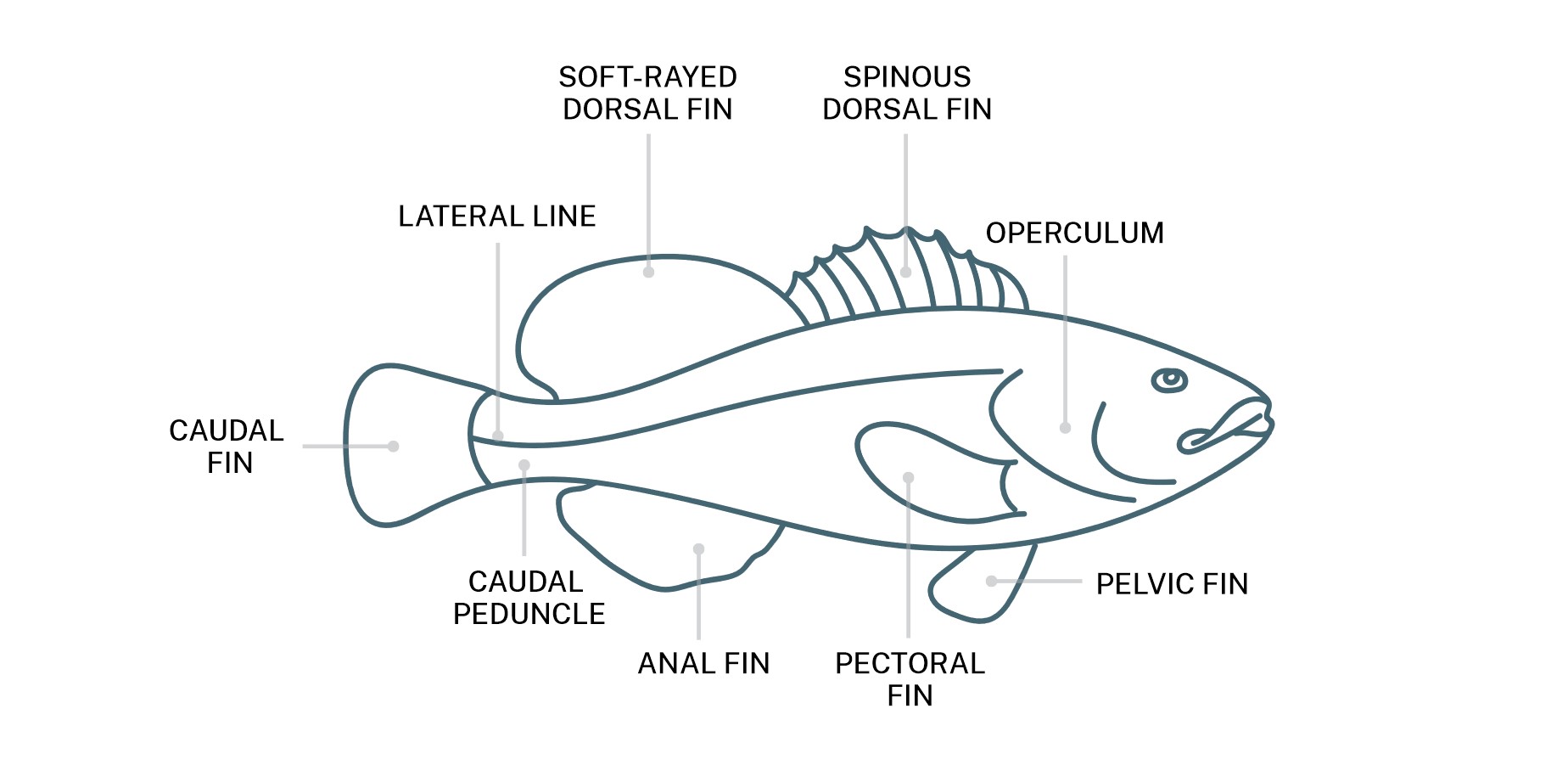How to identify fish
Fish can be identified by their body shape, colour and patterning, fin shape and fin positions. The illustrations below show the positions and names of the fins and other body parts mentioned in the species descriptions, as well as the shapes of the caudal fin as described in the text.



How fish are grouped and named
Fish, like all known living things, are given a scientific name, which consists of two parts (three if it is a subspecies) and is usually written in italics (see Table 1). The first part is the generic name or genus to which a species belongs, and the second part is the specific or species name. For example the Macquarie perch Macquaria australasica belongs to the genus Macquaria, and is the species australasica. The genus always begins with a capital letter, and the specific name starts with a lowercase letter.
Species that are closely related are placed in the same genus. For example, Macquarie perch and Golden perch are in the genus Macquaria. Closely related genera are placed in the same family, so that the similar perch (Macquaria) and freshwater cods (Maccullochella) are in the same family, the Percichthyidae. Family names always end in ‘-idae’. Closely related families are grouped into orders, orders are then grouped into classes, and classes are grouped into Phylums. For example all fish, mammals, reptiles, birds and frogs are in the Phylum Chordata, but fish are in the class Osteichthyes, the birds in Aves, reptiles in Reptilia, frogs in Amphibia and mammals in Mammalia. Consequently, the full classification for Macquarie Perch is:
- Phylum: Chordata (animals with a spinal cord)
- Class: Osteichthyes (bony fishes)
- Order: Perciformes (most marine and freshwater fishes)
- Family: Percichthyidae (freshwater perch, cod and bass)
- Genus: Macquaria (Australian freshwater perch and bass)
- Species: australasica (Macquarie perch)
Most species have a common name as well as a scientific name, but common names are not standardised, which can cause confusion. For example Golden perch is also known as ‘Yellowbelly’, or, in South Australia, ‘Callop’. Species found in several countries or continents—such as alien fish or migratory birds—often have many different common names, but always the same scientific name. Scientific names are often followed by the names of the authors who first formally described the species and the year that the species was described.
For example, Macquaria australasica Cuvier, 1830, means that the ichthyologist Cuvier first described Macquarie perch as a species in 1830. Sometimes the name and the year are enclosed in brackets, e.g. Trout cod Maccullochella macquariensis (Cuvier, 1829). This means that whilst Cuvier first described Trout cod in 1829, its scientific name has changed since he described it (he originally described it as Gristes macquariensis).
Sometimes a species does not yet have a valid scientific species name because it has not been formally described, and if this is the case there is no name or year after the scientific name. An example was the Dwarf flat-headed gudgeon, Philypnodon macrostomus. This species was recognised for more than 25 years but has only recently been described, with many books listing it as Philypnodon sp. The ‘sp.’ is an abbreviation for ‘species’ and simply identifies that it was an unnamed species belonging to the genus Phylipnodon.
Similarly, a species may not have a specific name where there is confusion about the correct taxonomy. An example is the carp gudgeons Hypseleotris where there are thought to multiple species and hybrids present.
What do the scientific names mean?
Scientific names usually have a recognizable meaning, often based on Latin. For example, in
Gadopsis bispinosus (Two-spined blackfish),
Gadopsis means ‘cod-like’ (from the Latin name
Gadus, the European cod) and bispinosus means ‘two spined’, referring to the usual number of spines in the dorsal fin, a distinguishing characteristic of the species. Sometimes the scientific name honours a person, place, or object. For example, the Murray cod is in the genus
Maccullochella, named after the Australian fish biologist Allan Riverstone McCulloch, and its specific name is
peelii, after the Peel River where the species was first collected.
Occasionally the meaning of old scientific names is not known, or there may be conflicting interpretations. The genus
Galaxias is thought to refer to the abundance of spots on the fish, like a galaxy of stars, but some authors have proposed that it alludes to the abundance of the species. For further insights into the meaning of fish names see
https://etyfish.org/


.jpg)